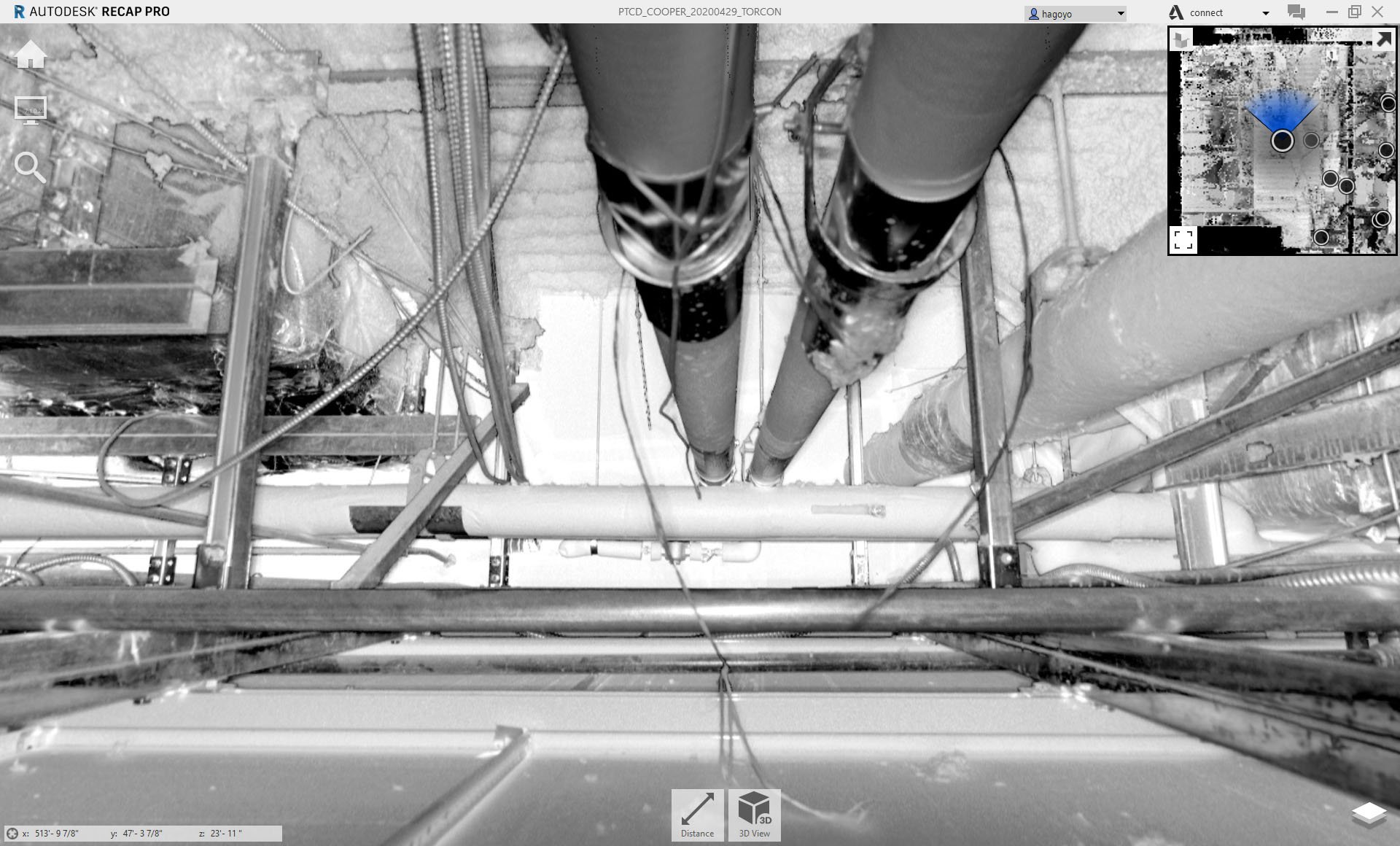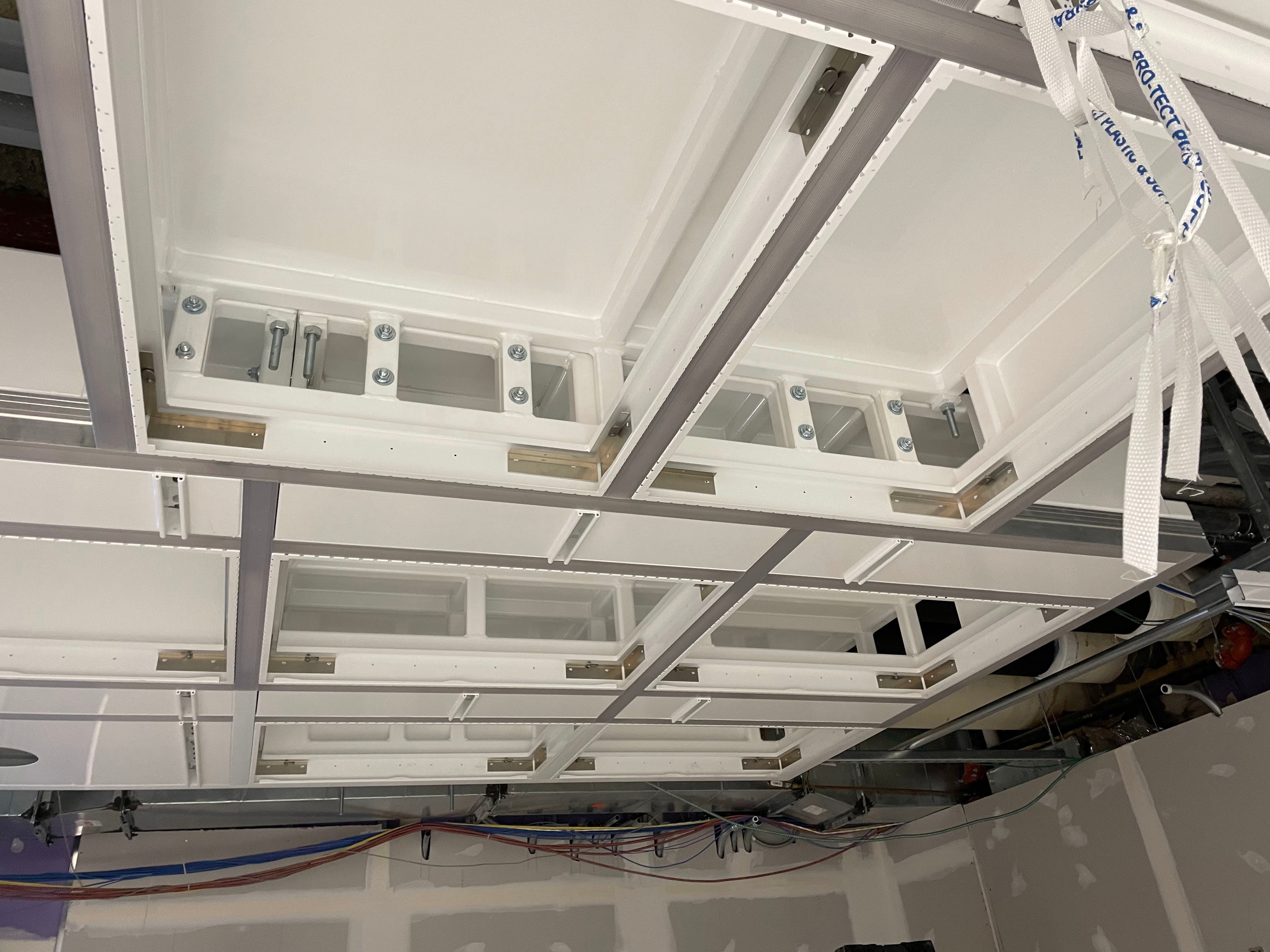Cooper University Hospital is a leading academic health system and operates one of the busiest level-1 trauma centers in its region. When Cooper engaged Array to design its Acute Stroke and Neuro Interventional Suite located within their emergency department, the first suite of its kind in the US, our team eagerly seized the opportunity. The design of the suite features state-of-the-art technology, medical equipment, and infrastructure to reduce time to table for critical stroke patients. Let’s review the meticulous planning and design process that underpins the AHA/ASA-certified comprehensive stroke center.
Project Drivers
Motivating Cooper University Hospital to lead this game-changing investment was the desire to provide world-class care for patients through leading-edge innovations in care delivery. Integrating the latest generation of imaging technology places them firmly on the front end of delivering this type of care. The suite includes Siemens Nexaris Angio-CT, a bi-plane angiography system with a fully integrated CT scanner and surgical image guidance, allowing minimally invasive intracerebral hemorrhage evacuation procedures. It is a technologically advanced piece of equipment that required a significant amount of infrastructure and extensive coordination across disciplines to succeed – especially considering that the project was retrofitted into the existing space and the CT was installed on rails to be used on demand in both the angio-IR suite and the CT room. Not only is the imaging on demand, but the technology also expands the capabilities of computerized tomography at the facility to meet the needs of the ED patient population.
.jpg?width=1500&name=2022_03_02_ArrayArc_CoHos_01_A_medium%20(2).jpg)
Point Cloud Scan
As the project took place during the pandemic and there was limited access to the emergency department, a point cloud scan was performed to facilitate the design. A point cloud scan uses LIDAR (light detection and ranging) scanners to acquire data that is synthesized to represent every visible detail of a space in 3D. The point cloud scan integrates with REVIT to enable designers to see the model in tandem with the existing space. Array’s designers relied on the scan to visualize MEP and anticipate clash detection, allow the team to determine what make-ready work was needed to ensure a seamless installation.

Unique Configuration
Located within the ED, the Neuro IR Suite and CT room reduces time-to-table for critical stroke patients, capitalizing on the precious minutes that are often the difference between brain damage and a full recovery. The biplane angiography system is combined with a CT on rails that slides between the neuro-IR suite and CT room on demand to seamlessly integrate angio, CT, and ultrasound images. This configuration enables a unique approach, providing dynamic imaging during procedures.
.jpg?width=1500&height=1125&name=2022_03_02_ArrayArc_CoHos_01_B_medium%20(1).jpg)
The IR suite and CT room are separated by a lead-lined, telescopic door that can be opened as needed allowing use of the CT equipment getting into the procedural area. Two distinct control rooms are included in the design to enable control of the CT from either space. The challenge was providing a room that can be subdivided most of the time and expanded when it was required to operate with all the equipment in coordination. This required an expanded surgical field and for the infrastructure to maintain the most strict environmental requirements.

The point cloud scan included the interstitial space above the ceiling to provide a view of existing MEP infrastructure. With constrained floor-to-floor height in the existing space, a pre-engineered, prefabricated mechanical-electrical-structural system manufactured by SLD Technology was employed to best use the available ceiling space. The modular ceiling unit incorporates booms, lighting, medical gases, and other infrastructure needed for a Class-3 procedure space within an assembly that is only 14 inches deep. The system includes a mechanical plenum for the required equipment, and a structural frame that provides support to the overhead components of the Siemens equipment.
Enabling Projects
In order to decant the space needed for the Neuro Interventional Radiology suite, Array helped Cooper University Hospital relocate the X-Ray modality that was displaced by constructing two new X-ray rooms. An observation unit located in the southeast corner of the facility was renovated as well.
.jpg?width=1500&name=2022_03_02_ArrayArc_CoHos_02_A_medium%20(1).jpg)
In Closing
These upgrades to Cooper University Hospital’s ED enable a new, more efficient, and better focused care platform for the local community. This investment in leading edge technology will save lives, bolster already-stellar patient clinical outcomes, and reinforce the system’s leading regional role in care delivery.

